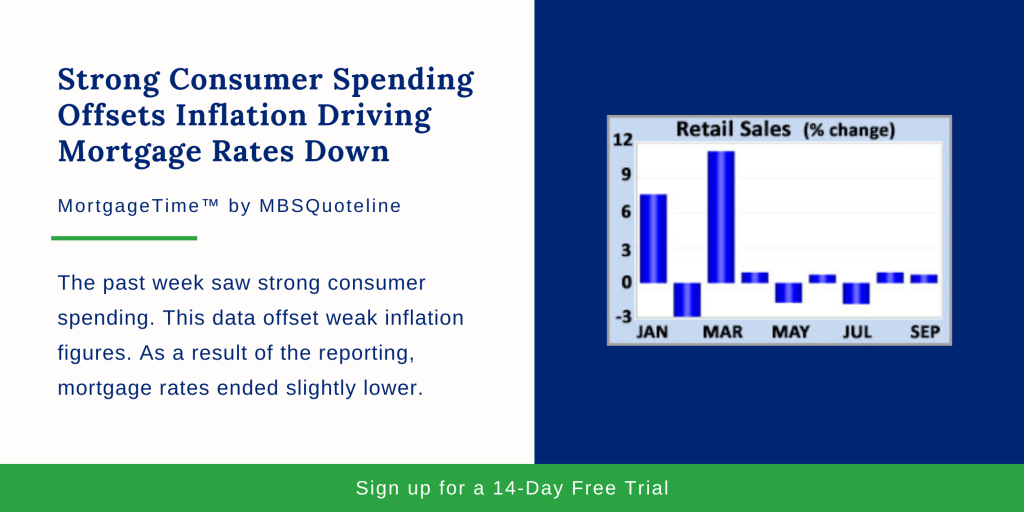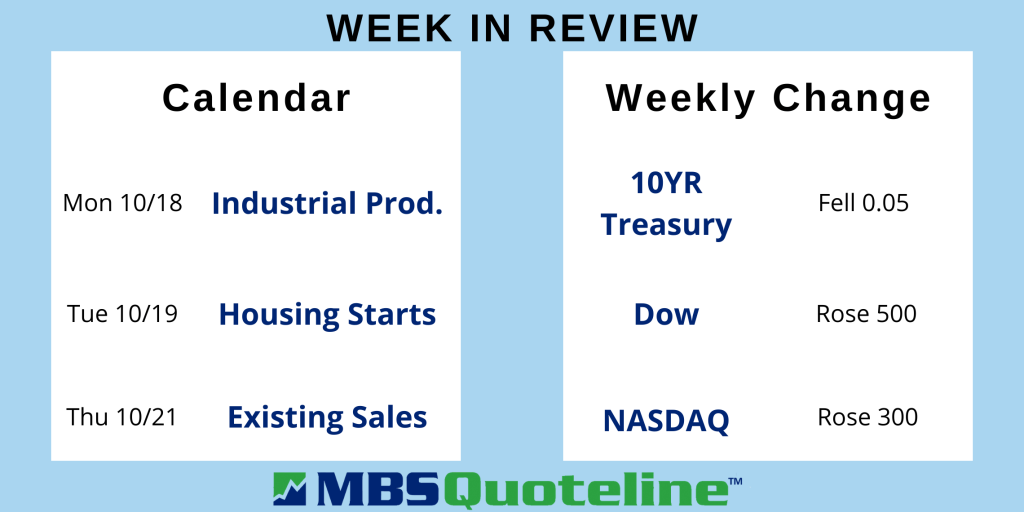The past week saw strong consumer spending. This data offset weak inflation figures. As a result of the reporting, mortgage rates ended slightly lower.
Strong Consumer Spending
Economists anticipated that the end of supplemental unemployment benefits would trigger a decline in consumer spending. They also thought the lack of product inventory would stifle consumer spending as well. However, they were wrong on both accounts.
Instead, retail sales jumped 0.7% from August 2021, triggering strong consumer spending results. Therefore, September’s data climbed far above the consensus forecast for a decline of 0.2%. Additionally, consumer spending rose an impressive 14% higher from a year ago at this time.
Strong Consumer Spending Offsets Weak Inflation Figures
Aside from the strong consumer spending data, the economy also faced weaker inflation figures. Over the past year, four key factors contributed to the meteoric rise of inflation. These include:
- Tight labor market
- Strong consumer demand for goods
- Rising energy prices
- Supply chain disruptions
Through these combined factors, inflation increased in recent months to the highest levels since 1991.
Analysts depend on the Consumer Price Index (CPI) as a closely watched inflation indicator. CPI examines price changes for a broad range of goods and services. In September 2021, Core CPI, which excludes the volatile food and energy components, rose 4.0% higher than a year ago. While this met the same annual rate of increase as last month, CPI soared above levels below 2.0% seen earlier in the year.
Fed officials and economists conflict about inflation’s outlook. Some feel that temporary factors spiked the annual rate of inflation. Others believe that we are seeing the beginning of a long-term impact.
Fed Update on Tapering Bond Purchase Program
While the economy witnessed weaker inflation this past week, the United States also saw strong consumer spending. Conclusively, the United States is still in the midst of a solid recovery after the initial reaction to the coronavirus pandemic.
Wednesday saw the release of the September 22nd, 2021, Fed meeting minutes. These minutes provided greater detail about the anticipated plans for tapering the massive bond purchase program. For the unacquainted, the Fed instituted the bond purchase program near the start of the pandemic to help the economy recover.
The Fed currently buys $120 billion per month of Treasuries and mortgage-backed securities (MBS). According to the September 22nd minutes, the Fed plans to reduce this buying pattern $15 billion per month beginning in November or December of this year. Analysts expect the program to conclude during the middle of 2022. Thus, the Fed’s timeline closely matched investor expectations.
Looking Ahead After Strong Consumer Spending
Looking ahead after the strong consumer spending, investors closely watch global COVID-19 cases. Also, investors look for hints from Fed officials about the timing of monetary policy changes.
Beyond that, next week focuses on the housing sector. In a light week, Housing Starts release on Tuesday. Existing Home Sales come out on Thursday.
Want to see how strong consumer spending impacts mortgage-backed securities? Never miss an update with MBSQuoteline. To receive by-the-minute updates on mortgage-backed securities, try our platform free for 14 days.
Stay connected with MBSQuoteline on social media by following us on Facebook, Twitter, and LinkedIn.
All material Copyright © Ress No. 1, LTD (DBA MBSQuoteline) and may not be reproduced without permission. To learn more about the MortgageTime™ newsletter, please contact MBSQuoteline at 800.627.1077 or info@mbsquoteline.com.



